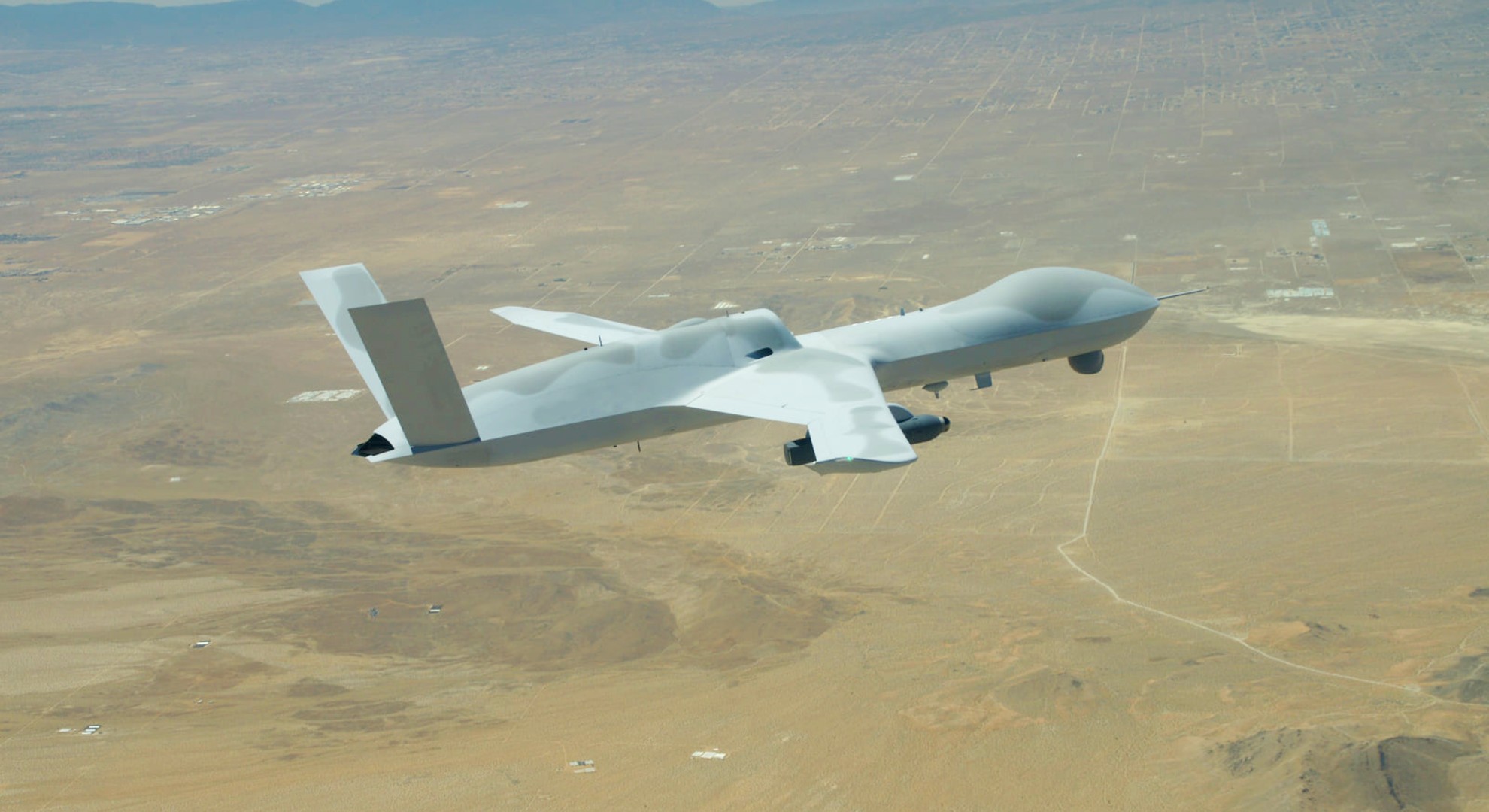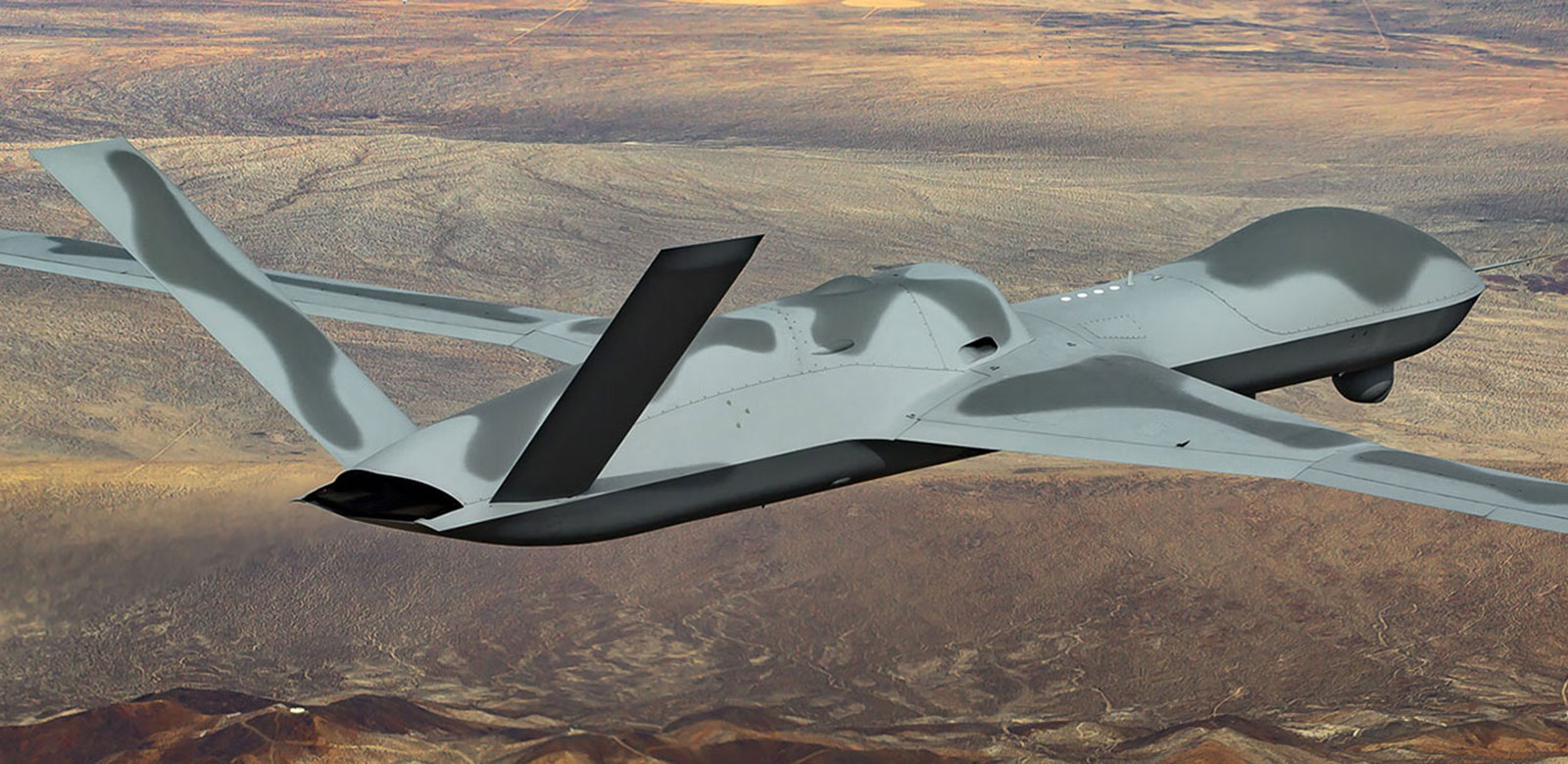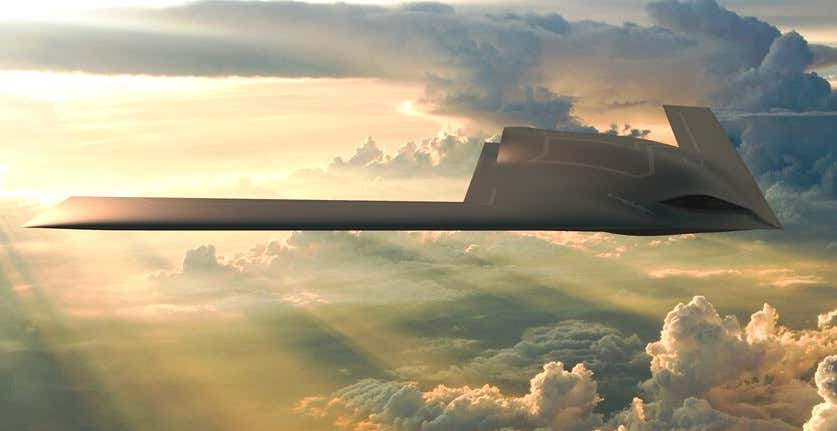The Air Force Research Laboratory (AFRL) has announced that its Skyborg autonomy core system, or ACS, successfully completed a flight aboard a General Atomics Avenger unmanned vehicle at Edwards Air Force Base. The Skyborg ACS is a hardware and software suite that acts as the “brain” of autonomous aircraft equipped with the system. The tests add more aircraft to the list of platforms Skyborg has successfully flown on, bringing the Air Force closer to a future in which airmen fly alongside AI-controlled “loyal wingmen.”
The Skyborg-controlled Avenger flew four two and a half hours on June 24, 2021, during the Orange Flag 21-2 Large Force Test Event at Edwards Air Force Base in California. Orange Flag is a training event held by the 412th Test Wing three times a year that “focuses on technical integration and innovation across a breadth of technology readiness levels,” according to an Air Force press release. You can read more about this major testing event in this past feature of ours.
The Avenger started its flight under the control of a human operator before being handed off to the Skyborg “pilot” at a safe altitude. A command and control station on the ground monitored the drone’s flight, during which Skyborg executed “a series of foundational behaviors necessary to characterize safe system operation” including following navigational commands, flying within defined boundaries known as “geo-fences,” adhering to safe flight envelopes, and demonstrating “coordinated maneuvering.”

The Avenger made its first flight in 2009 as a jet-powered follow-on to General Atomics’ Predator/Reaper family, featuring greater speed than its family members, a 20-hour flight time, some low-observable features, and a much higher flight ceiling of 50,000 feet. It can carry weapons internally in a weapons bay and externally. Only a handful of Avenger airframes have been produced and are used mostly out of the public eye and as testbed aircraft.
As of 2017, General Atomics had confirmed the sale of only one Avenger drone to the Air Force, but “up to seven” additional airframes were sold to an undisclosed U.S. government entity. However, General Atomics has previously eyed sales to unspecified international customers. Most of the details of the Avenger’s operational use remain classified.
In December 2020, General Atomics, as well as Boeing and Kratos, had received a contract to supply unmanned aircraft to the Skyborg program to actually carry systems developed under that program in future tests. It had not previously been clear what design the company planned to provide to the Air Force.
The Avenger flown in the tests at Orange Flag was designated as an MQ-20, according to the Air Force. This is a curious nomenclature given that the U.S. military has already assigned the “Q-20” slot in its aircraft designation system to the AeroVironment RQ-20 Puma AE. The service has also previously applied the YQ-11 designation to the Avenger, which it has employed in various testing roles, which also conflicts with the RQ-11 nomenclature for the AeroVironment Raven. Of course, unusual and out-of-sequence designations are not unheard of, especially for experimental and test aircraft.
The Avenger’s flight at Orange Flag was part of the AFRL’s larger Autonomous Attritable Aircraft Experimentation (AAAx), a program that has already seen the Skyborg ACS tested aboard a Kratos UTAP-22 Mako unmanned aircraft. The AAAx program appears to be aimed at eventually fielding autonomous air vehicles that are low-cost enough to operate in environments where there is a high chance of aircraft being lost, but are also reusable.
As part of that goal, the Skyborg program is developing an artificial intelligence-driven “computer brain” that could eventually autonomously control “loyal wingman” drones or even more advanced unmanned combat air vehicles (UCAVs). The AFRL wants the system to be able to perform tasks such as taking off and landing, to even making decisions on its own in combat based on situational variables.
The Air Force envisions Skyborg-equipped UAVs to operate both completely autonomously and in networked groups while tethered via datalinks to manned aircraft, all controlled by what the AFRL calls a “modular ACS that can autonomously aviate, navigate, and communicate, and eventually integrate other advanced capabilities.” Skyborg-equipped wingmen fitted with their own pods or sensor systems could easily and rapidly add extended capabilities by linking to manned aircraft flying within line-of-sight of them.

After the program was first revealed in 2019, the Air Force’s then-Assistant Secretary of the Air Force for Acquisition, Technology and Logistics Will Roper stated he wanted to see operational demonstrations within two years. The latest test flight of the Skyborg-equipped Avenger shows the service has clearly hit that benchmark.
The General Atomics Avenger was used in experiments with another autonomy system in 2020, developed as part of the Defense Advanced Research Projects Agency’s (DARPA) Collaborative Operations in Denied Environment (CODE) program that sought to develop drones that could demonstrate “collaborative autonomy,” or the ability to work cooperatively.

Brigadier General Dale White, Skyborg Program Executive Officer says that the successful Skyborg ACS implementation aboard an Avenger demonstrates the Air Force’s commitment to remaining at the forefront of aerospace innovation. “This type of operational experimentation enables the Air Force to raise the bar on new capabilities, made possible by emerging technologies,” said White, “and this flight is a key milestone in achieving that goal.”
The 412th Test Wing’s Emerging Technologies Combined Test Force (ET-CTF) carried out the Skyborg-controlled Avenger tests. Brigadier General Matthew Higher, Commander of the 412th Test Wing at Edwards AFB, said that the tests demonstrate the Wing’s commitment to pushing the envelope:
As we have throughout our history, the test and evaluation enterprise is adapting our people and capabilities to compete at the speed of relevance. The execution of this flight test is a great milestone for our closely integrated development and acquisition team. Safely executing this test in conjunction with Orange Flag both expands the envelope for autonomous vehicle flight testing and improves warfighter confidence working with autonomous wingmen. As always, we’re highly motivated to help bring tomorrow’s technology to the warfighter today.
General Atomics’ Avenger platform has also conducted flight tests equipped with Lockheed Martin’s Legion Pod, an infrared search and track sensor, or IRST, designed to detect and track other aircraft at long range. The Avenger was designed with a focus on air-to-ground strikes and surveillance, but could also be configured to fire air-to-air weapons.

Now that the remotely-piloted aircraft (RPA) has also demonstrated itself capable of being flown by the Skyborg ACS, it very well could be that it finds itself operating in a wide variety of roles in the future, all controlled autonomously from its onboard “computer brain.” While the Avenger hasn’t found a major customer, these demonstrations show that there is no reason why the UCAV couldn’t be examined again for more autonomous operations in semi-contested environments. Then again, General Atomics is already looking towards what comes after the MQ-9 Reaper under the MQ-Next program, which will likely be a higher-end UCAV that is more survivable than the Avenger.

For the time being, the tests of the Skyborg ACS aboard an Avenger shows that the modular, open system can be successful employed aboard a variety of unmanned aircraft. As it develops further, Skyborg could very well prove itself to be a defining capability in terms of how the Air Force fights in the future.
Contact the author: Brett@TheDrive.com
